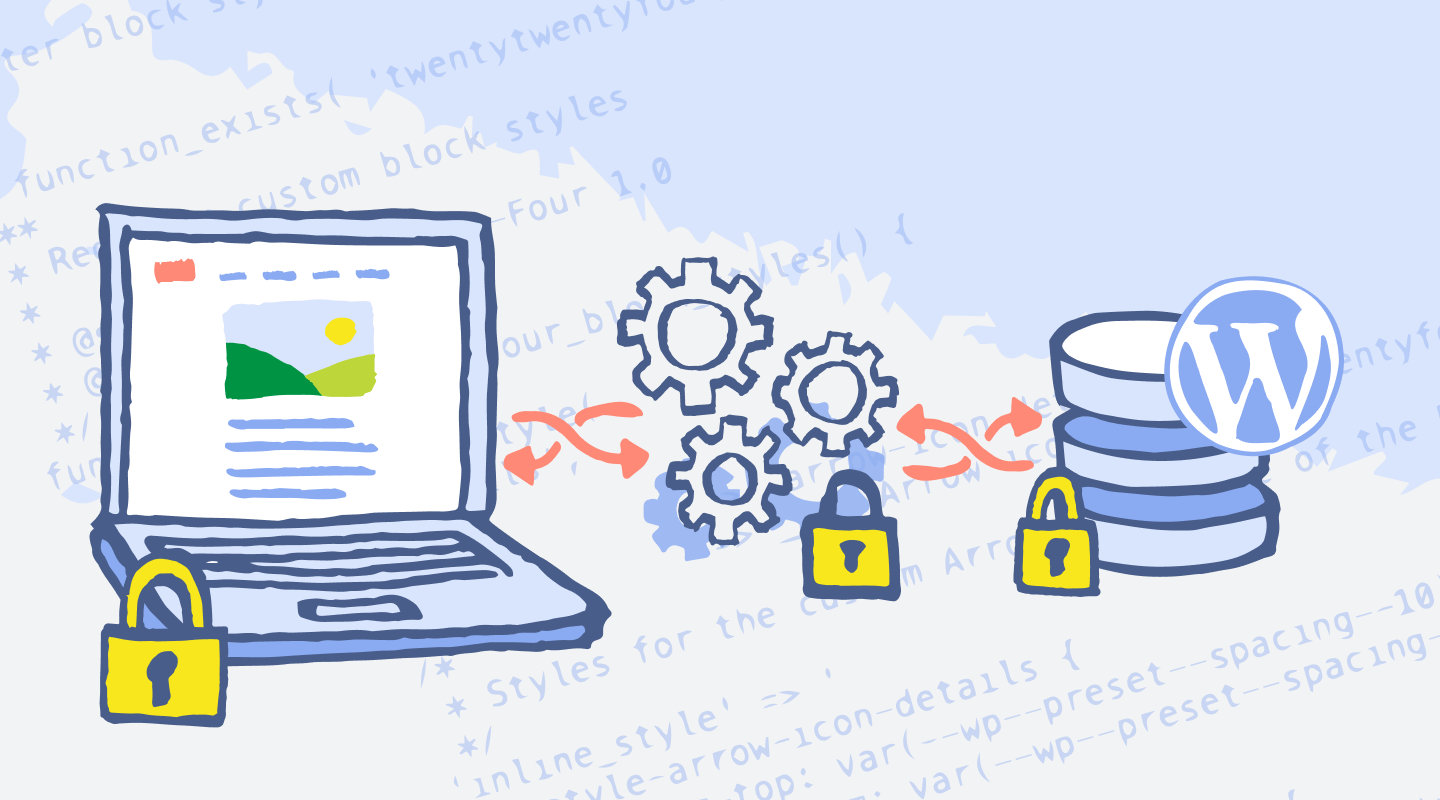
Compiled Languages vs. Interpreted Languages: A Comprehensive Comparison in Software Development
Introduction to Programming Languages
The evolution of programming languages is a remarkable journey that reflects the growing complexity of computing systems and the ever-increasing demand for more sophisticated software development methods. The history of programming can be traced back to the early days of computing, where assembly and machine languages initially dominated the landscape. These low-level languages directly interacted with the hardware, providing developers with intricate control over the computer’s operations, albeit at the expense of readability and portability.
As the need for more accessible programming solutions grew, high-level languages emerged in the 1950s and 1960s. Languages such as Fortran, COBOL, and LISP allowed programmers to write code that was more abstract and closer to human language, significantly enhancing productivity and reducing the likelihood of errors. This evolution simplified the process of programming and expanded its applications across diverse fields, from scientific computing to business management.
The classification of programming languages into compiled and interpreted categories has its roots in these developments. Compiled languages, like C and Rust, translate code into machine language before execution, resulting in high-performance applications. Conversely, interpreted languages, such as Python and Ruby, execute code line-by-line, offering greater flexibility and ease of use, though often at the cost of speed. This division highlights the specific needs and preferences of developers, influencing language design and implementation practices.
As software development continues to advance, understanding the underlying concepts of programming languages is crucial for developers. This knowledge allows them to choose the right tools for their projects, facilitating efficient approaches that align with the objectives of modern software engineering. Ultimately, the history and development of programming languages set the foundation for the ongoing evolution within the field, paving the way for innovative methodologies that enhance both performance and usability.
Defining Compiled and Interpreted Languages
In the realm of software development, programming languages can be broadly categorized into two distinct types: compiled languages and interpreted languages. Understanding the fundamental differences between these two categories is essential for developers and engineers as it influences the choice of a programming language for a specific project.
Compiled languages require a compilation step before the code can be executed. This process involves transforming the high-level source code written by a developer into machine code, which is the low-level code that a computer’s processor understands. The compilation is typically performed by a compiler, a specialized program that processes the entire codebase and generates an executable file. Examples of compiled languages include C, C++, and Go. These languages are often noted for their performance efficiency, as the executable can be optimized for speed and resource usage during the compilation stage.
In contrast, interpreted languages do not require a separate compilation step. Instead, they execute instructions directly from the source code, translating the high-level instructions into machine code on-the-fly at runtime. This characteristic allows for greater flexibility and ease of use, as developers can test and modify their code without the need for recompilation. Popular interpreted languages include Python, JavaScript, and Ruby. While interpreted languages typically offer a more straightforward development process, they may suffer from performance overhead due to the real-time interpretation of commands.
Both compiled and interpreted languages have their unique advantages and disadvantages, impacting aspects such as execution speed, resource consumption, and ease of debugging. By grasping these definitions and examples, developers can make informed decisions when selecting a programming language for their projects.
The Compilation Process Explained
The compilation process is a critical phase in the development of software using compiled languages. This process involves transforming high-level source code into machine code, which can be executed directly by a computer’s processor. The compilation process is typically divided into several stages, each playing a vital role in the efficiency and functionality of the final executable program.
Initially, the process begins with lexical analysis. During this stage, the compiler scans the source code to identify tokens, or the smallest units of meaning, such as keywords, operators, and symbols. This transformation from raw code into recognizable tokens serves as a preparatory step for the subsequent phases. Once lexical analysis is complete, syntax analysis takes over. In this stage, the compiler verifies that the token sequences conform to the grammatical rules of the programming language. This ensures that the code structure is sound and identifies errors related to language syntax.
Following syntax analysis, semantic analysis takes place. This critical phase examines the semantic meaning of the code beyond its structure. It involves checking for discrepancies such as variable type mismatches and scope issues, ensuring that the code behaves as intended. After correcting any identified issues, the optimization stage commences. Here, the compiler refines the code to enhance execution efficiency. This may involve eliminating redundant code, minimizing resource consumption, or even improving the performance of the generated machine code.
The final stage of the compilation process is code generation, wherein the compiler translates optimized code into machine language. This binary format is crucial as it enables the processor to understand and execute the program. Each of these stages is integral to the overall efficacy of compiled languages, ensuring that high-level instructions are effectively transformed into a form that is comprehensible to computing systems. The significance of this compilation process cannot be overstated, as it lays the foundation for successful software execution.
Understanding the Interpretation Process
The interpretation process is a crucial aspect of how interpreted languages execute code. Unlike compiled languages, where the entire program is transformed into machine code before execution, interpreted languages utilize an interpreter that reads and executes code line-by-line at runtime. This mechanism allows for greater flexibility, as developers can modify code on the fly without needing to recompile the entire program. The interpreter translates high-level language commands into machine instructions, facilitating immediate execution.
During the execution of an interpreted language, the runtime environment plays a vital role. It provides the necessary resources for executing the code, managing memory allocation, and ensuring the correct handling of variables and data types. This environment enables dynamic features such as late binding and reflection, which are often not available in compiled languages. Furthermore, as the interpreter encounters each line of code, it can perform various checks and optimizations in real-time, which can enhance the development experience by providing immediate feedback to the programmer.
However, this method of execution comes with certain trade-offs. The interpretative approach, while flexible, often results in slower execution speeds compared to compiled languages, which benefit from optimized machine code. This performance lag can manifest in applications where speed is a primary concern, such as in computational heavy tasks. On the other hand, the ability to run code in a dynamic manner makes interpreted languages well-suited for environments where rapid prototyping and development are prioritized. Ultimately, the choice between interpreted and compiled languages hinges on the specific needs of a project, emphasizing the balance between flexibility and execution efficiency.
Comparative Analysis: Advantages and Disadvantages
When delving into the realm of software development, the distinction between compiled and interpreted languages becomes paramount. Each has its unique set of advantages and disadvantages that developers must consider based on their specific use cases.
Compiled languages, such as C and C++, translate source code into machine code prior to execution. One of the most significant advantages of compiled languages is their performance efficiency. As machine code runs directly on the hardware, applications tend to exhibit faster execution times, making compiled languages ideal for resource-intensive applications. Furthermore, compiled languages generally offer enhanced optimization opportunities; compilers can analyze code and implement performance improvements. However, this speed comes at the expense of portability, as compiled code is often system-specific, limiting its usability across different platforms without recompilation.
On the other hand, interpreted languages, like Python and Ruby, execute source code line-by-line at runtime. This approach offers superior portability since the same code can run on any machine equipped with the corresponding interpreter. Interpreted languages often provide greater ease of use, making them accessible for beginners and rapid prototyping, as they require less setup than their compiled counterparts. However, the trade-off is often found in performance; executing each line in real-time can lead to slower execution speeds for larger applications. Moreover, debugging can be simpler due to the dynamic text nature, allowing immediate runtime feedback, although this may mask some underlying issues that only surface in a compiled environment.
In the industry, the choice of language often aligns with specific project requirements. For example, real-time systems may benefit from the efficiency of compiled languages, while web development often embraces the flexibility of interpreted ones. Ultimately, understanding the strengths and weaknesses of each type can aid developers in making informed choices that align with their goals and constraints.
Real-World Examples of Compiled and Interpreted Languages
In the realm of software development, understanding the distinctions between compiled and interpreted languages is critical, as it directly influences performance and usability in various applications. Compiled languages, such as C, C++, and Rust, are known for their efficiency and speed, making them suitable for system-level programming and performance-critical applications. For example, C is widely utilized in operating systems and embedded systems due to its low-level access to memory and hardware resources. C++ builds upon C’s capabilities by adding object-oriented features, which facilitates the development of complex software structures like game engines and high-performance applications. Rust, a relative newcomer, emphasizes safety and concurrency, making it an excellent choice for modern applications requiring high security and performance.
On the other hand, interpreted languages like Python, JavaScript, and Ruby focus on ease of use and flexibility. Python, renowned for its simplicity and abundance of libraries, is widely used in web development, data analysis, artificial intelligence, and automation. This versatility has contributed to its rising popularity in both academic and commercial environments. JavaScript stands out as an essential tool for web development, enabling interactive elements on websites and facilitating server-side programming through environments like Node.js. Ruby, famous for its elegant syntax, excels in web applications, particularly in the development framework Ruby on Rails, which promotes rapid application development.
Each language serves unique purposes in the tech industry, with compiled languages providing the high performance needed for applications working closely with hardware, while interpreted languages deliver swift development cycles and adaptability, catering to web developers and data scientists alike. Understanding these examples and their use cases allows developers to choose the right tools for their projects, enhancing productivity and application efficacy.
Current Trends in Programming Languages
In the rapidly evolving landscape of software development, current trends reflect significant advancements and innovations in programming languages. One notable trend is the implementation of Just-In-Time (JIT) compilation. This technique combines the benefits of both compiled and interpreted languages, offering performance improvements by compiling code at runtime. JIT compilation allows for optimizations that can enhance execution speed while maintaining the flexibility of interpreted languages. This has led to a growing interest in languages like Java and JavaScript, which leverage JIT compilation to optimize performance dynamically.
Another emerging trend is the rise of multi-paradigm programming languages. Modern programming practices increasingly involve the blending of different programming styles, such as object-oriented, functional, and procedural paradigms. Languages like Python and Scala exemplify this shift, enabling developers to choose the most effective paradigm for a particular task. This flexibility caters to diverse programming needs, facilitating rapid application development and enhancing overall productivity. Furthermore, as software projects become more complex, the ability to combine paradigms within a single language offers significant advantages in code maintainability and readability.
Performance remains a pivotal focus in language development, evidenced by the continuous enhancement of existing languages and the emergence of new ones designed with efficiency in mind. For instance, languages like Rust and Go have gained popularity for their emphasis on concurrent programming and memory safety, addressing the demands of modern applications that require high performance and reliability. Additionally, the community-driven nature of many programming languages fosters continuous improvement, influencing advancements that blur the lines between compiled and interpreted languages.
As the software development ecosystem evolves, understanding these trends in programming languages becomes crucial for developers looking to harness their potential in creating innovative solutions.
Future Directions in Software Development
The landscape of software development is continuously evolving, driven by rapid technological advancements and changing user demands. As we move forward, both compiled and interpreted languages are likely to adapt in response to these developments, influencing how developers choose and utilize programming languages in their projects. One significant area of growth is the advancement of hardware. With the rise of multi-core processors, the potential for more efficient parallelism is becoming a priority. Compiled languages, traditionally favored for their high performance, may see enhancements that further optimize code execution by taking full advantage of hardware capabilities.
Cloud computing represents another transformative force in software development. The ability to leverage cloud infrastructure allows for a more robust execution environment, which can benefit both compiled and interpreted languages. Developers may increasingly turn to interpreted languages for rapid development cycles and prototyping, while compiled languages could be used for performance-critical components running in cloud-based solutions. This hybrid approach is expected to gain traction as teams look to balance speed and efficiency, depending on project requirements.
Moreover, the integration of artificial intelligence (AI) into software development processes is predicted to influence the design and usage of programming languages significantly. AI-driven tools may automate mundane coding tasks, enabling developers to focus on more complex problem-solving aspects. As AI continues to advance, it could lead to the emergence of new languages specifically designed to cater to AI programming paradigms, creating a need for developers to adopt these tools effectively.
As the field progresses, the choice of language remains critical for developers in varying contexts, balancing factors such as performance, ease of use, and ecosystem support. In conclusion, the future of programming languages will be shaped by technological innovations and developer needs, with both compiled and interpreted languages poised to play essential roles in modern software development.
Conclusion: Key Takeaways
In the landscape of software development, understanding the distinctions between compiled and interpreted languages is crucial for making informed decisions about technology stacks and development strategies. Compiled languages, such as C++ and Rust, translate code into machine language before execution. This process results in superior performance and efficiency, which is invaluable in resource-intensive applications, such as game development or system programming. The notable advantage of compiled languages lies in their ability to optimize and minimize runtime errors, leading to robust applications that can fully leverage hardware capabilities.
On the other hand, interpreted languages, including Python and JavaScript, offer unparalleled flexibility. These languages are executed line by line, which allows for rapid development and easier debugging. This is particularly beneficial in scenarios where quick iteration and dynamic behavior are prioritized, such as web development or scripting tasks. The trade-off, however, is generally slower performance compared to compiled languages. Consequently, the choice between the two may depend heavily on the specific requirements of a project, including factors such as speed, complexity, and the development environment.
In evaluating when to utilize compiled versus interpreted languages, developers should consider not only performance needs but also the nature of the project at hand. For instance, applications that demand high execution speed and efficiency might steer developers towards compiled languages, while projects focused on rapid iteration and ease of use may well benefit from interpreted counterparts. Ultimately, understanding these crucial differences enables developers, regardless of their experience level, to choose the most suitable language for their specific needs, thus enhancing the overall success of their software projects.







